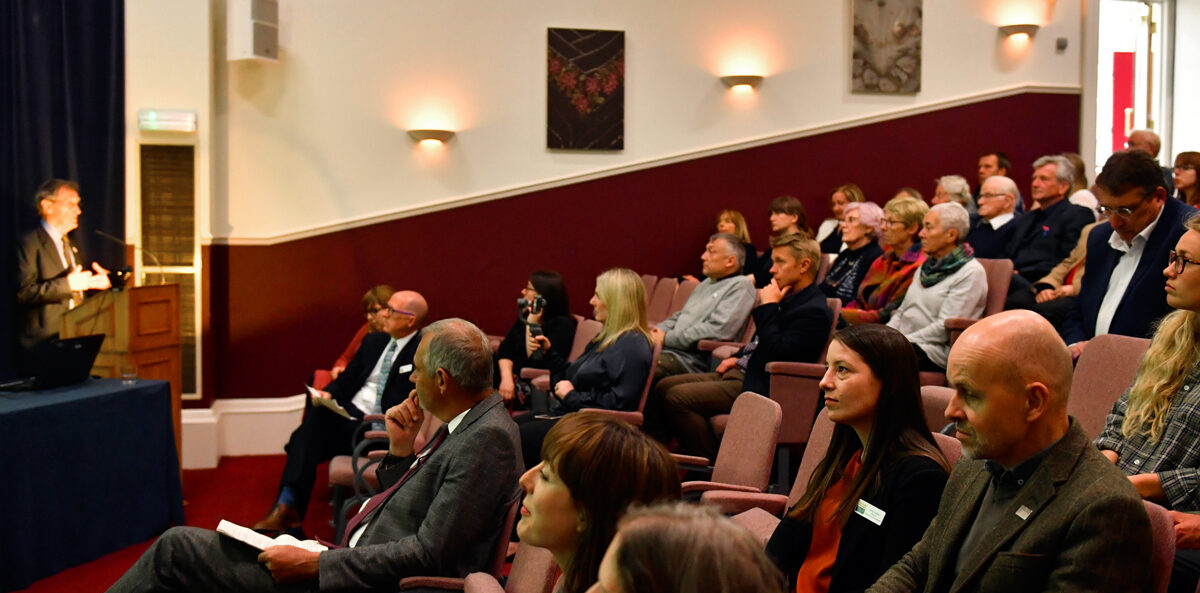Delivered by Tullie House Museum and Art Gallery Trust
These talks will explore how World Heritage status ties in with UNESCO’s mission to promote peace, toleration and understanding amongst the peoples of the world. Subjects include the aspiration for the World Heritage of the Roman Frontiers to include all nations through which the frontiers once ran, protection of World Heritage in conflict zones and reflections on the relevance of Roman frontiers for the modern world.
The speakers for the first event include:
Keynote by Her Excellency, Claudia Reinprecht
Austrian Ambassador to UNESCO ‘World Heritage of the Roman frontiers – a 6,000km World Heritage Site?’ Claudia Reinprecht is championing an ambitious and challenging project to expand the Roman Frontiers World Heritage designation to include the Roman frontiers in the Near East and North Africa. This would result in a total length of some 6,000 km of World Heritage linked by a common theme, encouraging international collaboration and understanding. UNESCO uses education, science and culture to inform, inspire and engage people everywhere to foster understanding and respect for each other and our planet and to promote peaceful understanding, tolerance and collaboration amongst the peoples of the world. The transnational Frontiers of the Roman Empire World Heritage Cluster has huge potential to promote these values across the nations through which the Roman frontiers once ran.
Professor Peter Stone
‘UNESCO World Heritage and the Peace agenda’
Professor Peter Stone is UNESCO Chair in Cultural Property Protection & Peace – the only such Chair in the world. In August 2020, Peter was elected as President of the Blue Shield having served as Vice President between 2017 and 2020. The Blue Shield is the international NGO created in 1996 to advise UNESCO on the protection of cultural heritage in the event of armed conflict. In 2003 Peter was advisor to the UK’s Ministry of Defence regarding the identification and protection of the archaeological cultural heritage in Iraq. He has remained active in working with the military to refine attitudes and develop processes for the better protection of cultural property in times of conflict. His article ‘The 4 Tier approach’ led directly to the establishment of a Joint Service Cultural Property Protection Unit in UK forces to become operational in 2019/20. In his paper, Peter will explore the challenges, opportunities and impacts of his work.
Dr. Nigel Mills
‘Communicating World Heritage values – the Living Frontier exhibit in the Roman Frontier Gallery, Tullie House Museum’
The Roman Frontier Gallery at Tullie House Museum and Art Gallery opened in 2011. The concept for the new gallery was designed to explore a much wider narrative than that provided at most other museums along Hadrian’s Wall at the time, looking at the ebb and flow of Rome’s north west frontier over 400 years and the position of Britain as a military province within the Empire. A secondary objective was to explore the contemporary resonance of the Roman frontier and to connect with UNESCO’s founding mission to promote peaceful co-existence and partnership between the nations of the world through respect, understanding, toleration and cooperation. The Living Frontier exhibit was conceived to deliver this objective by comparing Roman and modern frontiers and by encouraging responses from visitors. Since the gallery opened, hundreds of visitors have engaged with this exhibit, leaving hundreds of thoughtful responses. With the help of the Tullie House Youth Forum, this paper explores these responses and the lasting impact and relevance of the exhibit to visitors.
Professor Richard Hingley
‘Promoting tolerance and understanding while marketing Roman frontier heritage’
This paper explores the difficulty of using Roman frontier heritage to promote tolerance and understanding in our market-driven economy. The vital need to attract visitors to heritage sites (ancient monuments and museums) along Hadrian’s Wall requires heritage managers and educators to tell positive tales about the Roman past which often draw upon the concept of ‘What the Romans did for us’. This enabling interpretation of the Roman past draws upon origin myths that interpret the Romano-British past in broadly positive terms; this approach is characterized on the Wall by the interpretation offered at many museums and monuments and also by the performances of the military re-enactors that are often used to draw the public to heritage assets. Can we tell more critical and nuanced tales about Roman frontier life without potentially alienating our publics? For some earlier discussion of these ideas see: Hingley, R. 2021. ‘Assessing how representations of the Roman past impact public perceptions of the province of Britain’, Public Archaeology, 2021, 1-20. [open access: https://doi.org/10.1080/14655187.2021.1947064].
Marta Alberti and Katie Mountain
‘Managing Hadrian’s Wall for the future’
This talk will look at how Hadrian’s Wall management has changed over the last decade. A pool of authors, including archaeologists, curators, re-enactors and walkers have come together to publish a new book on the subject. The volume celebrates the 1900th anniversary of the Wall by looking at its future, through the exploration and enjoyment of its past. Expect us to cover gaming on the Wall, the effects of climate change on archaeology, what mines of information lay hidden in collections, community engagement and why dressing up as a Roman inevitably attracts a crowd.
